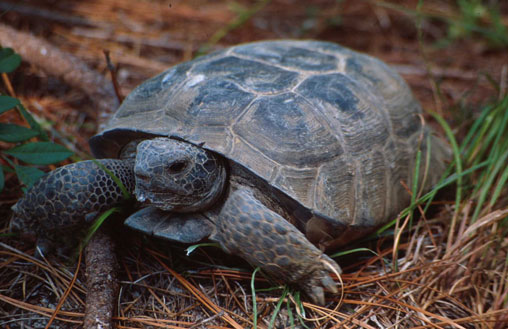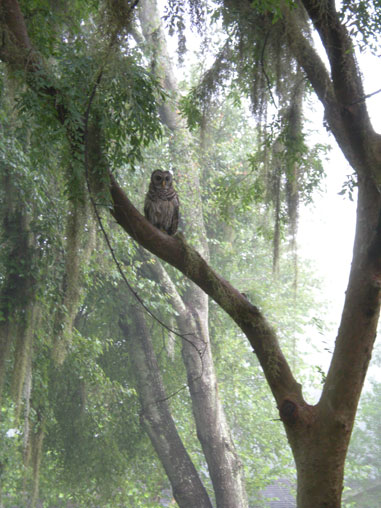 What Wildlife Needs
What Wildlife Needs
Wildlife needs food, water, and cover, and can only live where these needs are met. Florida’s plants and animals (from panthers and black bears to the tiniest insects) have co-evolved over thousands of years, resulting in a complex and wondrous web of interdependence. An ideal landscape uses native plants to provide a year round food supply – such as berries, fruit, seeds, and nuts. Water is essential for wildlife, and your water source can be as elaborate as a pond with a waterfall or as simple as a dish of water. Cover needs to be provided for wildlife to breed, nest, hide, sleep, and feed.
Many native plants that provide food also provide cover. Dense evergreen trees or shrubs (such as yaupon holly or Walter’s viburnum) or thorny shrubs and vines (such as blackberries) are perfect cover, as well as a food supply, for a variety of wildlife. Dead trees and brush piles also provide cover. Many animals require a cavity in a dead tree (snag) for nesting. If possible, leave a dead tree for the bluebirds, woodpeckers and flying squirrels.
Only humans make “waste”. Mother Nature recycles everything. All of the yard “trash” that people throw away can be used by some animal somewhere in the food chain. Create brush piles with fallen tree limbs and use fallen leaves and grass clippings as your mulch. Leave stumps and fallen logs for cover and foraging areas.

Pull out all the stops…
So you planted a nice big native shrub with flowers right in the middle of your yard, and still haven’t seen any wildlife?
Diversify. Plant a variety of native species. Different plants flower, fruit, and drop their leaves in different season. Even a small landscape can include dozens of species of plants.
Cater to every taste. Most native plants listed as “wildlife attracting” have fruits or nectar eaten y birds and butterflies. However, insect-eating birds need plants that attract insects. Tiny flowers that don’t attract us often attract insects (and the birds that eat them). We can help you choose insect-attracting plants for our area.
Feed the baby. To have adult butterflies, the species-specific larval food plants need to be available. Larval food plants can be denuded by hungry caterpillars! Relax and enjoy the fact that you’re feeding baby butterflies. Your plants will grow back. Remember, they’re naturally adapted to this abuse.
Go organic. Opt for slow release, natural / organic source fertilizers applied only when absolutely necessary (in many yards, that’s never). Feed your plants with leaf litter and kitchen compost. Use herbicides and fertilizers with great care and remember, “the label is the law.” Never use pesticides.
Spare that weed. Ralph Waldo Emerson said that a weed is a plant whose virtues have yet to be discovered. Leaving some native “weeds” in your garden, such as Spanish needles (Bidens spp.), helps ensure that there is always something in bloom for butterflies to nectar on. Many “weedy” plants are also butterfly larval foods.

Make it red. You might choose coral honeysuckle (Lonicera sempervivens), cross vine (Bignonia capreolata), firebush (Hamelia patens), red buckeye (Aesculus pavia), scarlet hibiscus (Hibiscus coccineus) or tropical sage (Salvia coccinea). Everybody loves red flowers – hummingbirds, butterflies and people!
Dress the yard in layers. Include big trees, small trees, big shrubs, small shrubs, wildflowers, vines, and clumps of ornamental grasses in your landscape design. By providing vegetation at every “level,” you’ll support animals that forage and nest on the ground, a few feet up, or high up in the air.
Thanks to the Florida Native Plant Society for information used on this page.
